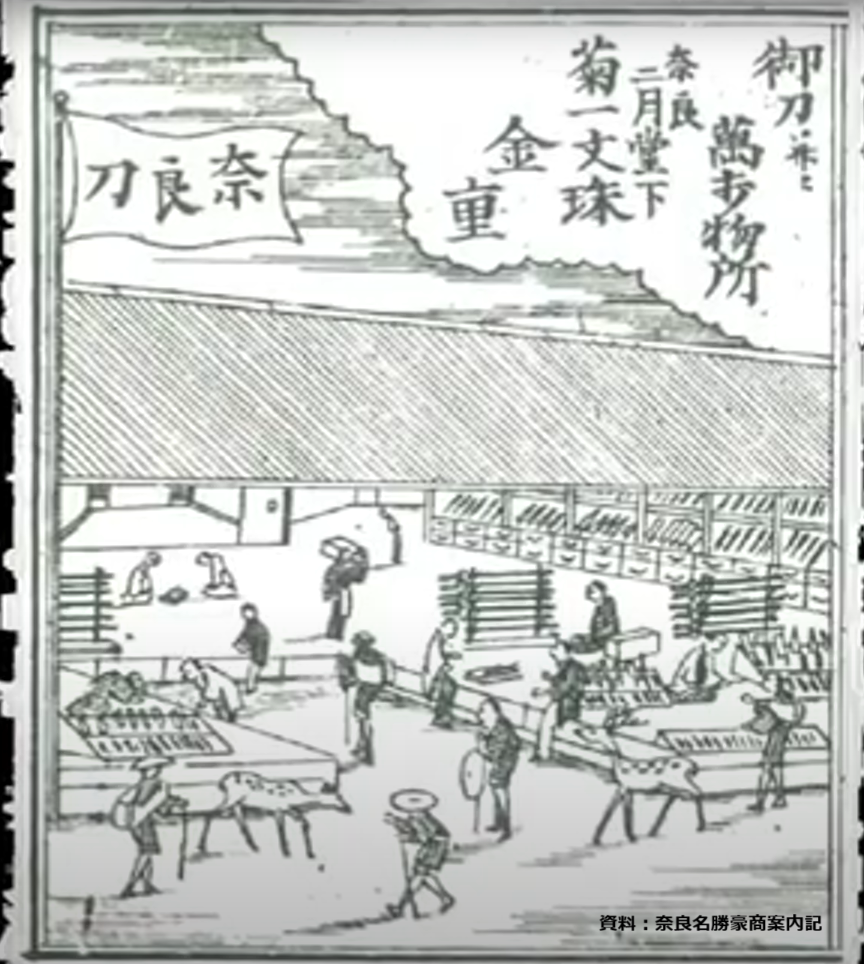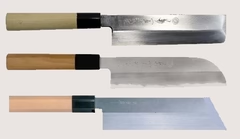-
- USA/Canada 1-800-285-2726
- Australia (02) 8006 4411


"Japan’s Kamakura period (1185-1333) saw not only the rise of the Samurai class, but also of the sword smiths who elevated the art of sword making to new heights. At the time, five schools were competing to forge weapons for Nara’s famous warrior monks. One particular maker, Kanenaga of the Tegai school, was renowned for his superior skills as a sword maker and made the Tegai school the leading sword makers in all of Japan. It is from this master craftsman that Kikuichi Monjushiro Kanenaga, Inc. was born.
Skilled trades in Japan, such as sword making, are historically passed down from one generation to the next. In this way tradesman can insure the success and survival of the family business. Kanenaga eventually passed his skills and knowledge to his son, who then passed them to his son, and so on. It is through Kanenaga’s grandson, Shiro-zaemon, that we come to an interesting part of our family’s story.
Young Shiro was known for his devotion to the god of wisdom, Monju Bodhisattva, and could often be found deep in prayer while forging. It is said his devotion was so sincere and praying so fervent that Monju himself appeared before the young sword maker and instructed him in creating a blade unlike any seen before. Shiro’s new style of smithing eventually spread to other regions of Japan and came to be known simply as “Monju”. To this day you can find Shiro’s divine inspiration in our workshops and in each of our finely crafted blades.
Kanenaga’s legacy lives on in other ways, too. From his lineage six swords have been designated as “Important Cultural Property”, while a further nine are listed as “Important Art Objects”. His namesake sword, crafted by the legendary Kanenaga himself, is designated as one of Japan’s national treasures. We at Kikuichi Monjushiro Kanenaga are honored to carry on his legacy of excellence, passed down through the ages, to bring you the world’s finest brand of modern cutlery. It is our hope these 750 years of family tradition will continue for many generations to come."

This style of knife is widely used in the West as a multi-purpose chef’s knife and has also gained popularity among professional chefs in Japan. The long, pointed blade is suitable for slicing, chopping, and fine tasks.

Closely related to the Bunka Bōchō," this is the most popular knife style in Japan for everyday use, covering meat, fish, and vegetables. It combines the slender shape of a Gyuto and the broad profile of a Nakiri.

A rectangular double-bevel knife (called Usuba when single-bevel). Its straight edge, from tip to heel, excels at chopping vegetables and leafy greens. One of Japan’s traditional knife styles.

Often referred to as a fruit knife, this small knife is ideal for handling small ingredients with precision. Its narrow blade provides stability when cutting in-hand, peeling, or trimming.

Smaller and more maneuverable than a Petty knife, perfect for peeling and decorative cuts. It can also be used as a table knife for cheese or butter, offering versatile use beyond the kitchen.

A long, slender double-bevel knife originally designed to cut along muscle fibers in large cuts of meat. It also works well for slicing sushi rolls or even sashimi, making it a surprisingly versatile tool to keep on hand.

Designed for separating meat from bone. Its thick, sturdy tip prevents chipping when striking bone. Commonly used for poultry, but versatile for meat processing in general. Available in both square-tip and round-tip versions.

A traditional Kansai-style single-bevel sashimi knife, now used nationwide. Its long, thin blade allows for single, smooth cuts that preserve the texture of delicate fish. Recommended lengths: 210–240mm for home use, 240–300mm for professionals.

Primarily used in the Kanto region. Similar to Yanagiba, but with a flatter tip and thinner blade overall.

Specialized for slicing the firm, resilient flesh of pufferfish. Narrower and thinner than Yanagiba or Tako Hiki. Highly delicate and sharp, requiring advanced skills in both use and maintenance.

Designed for breaking down whole fish. The thick, durable heel is used to cut off heads, while the single-bevel edge separates flesh from bone. Also suitable for scaling and gutting, covering most fish preparation tasks.

A traditional single-bevel vegetable knife. Its extremely thin edge slices cleanly through fibers without crushing them, ideal for fine cuts and katsuramuki (rotary peeling). Available in square-tip (Kanto), rounded (Kama), and pointed (Kansai) styles.
